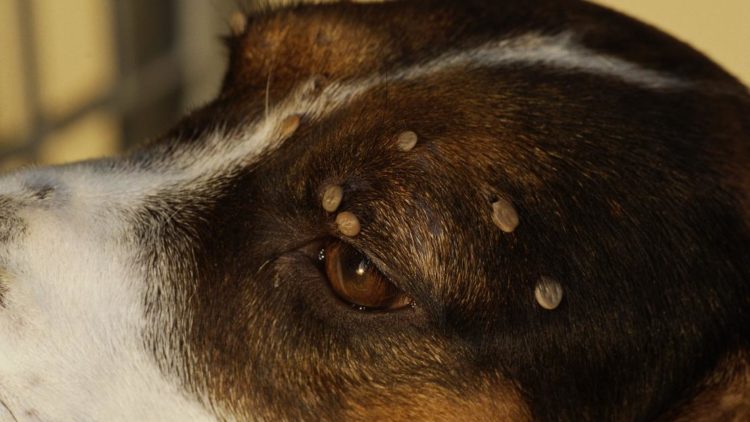Ticks are small blood-sucking parasites that can transmit very serious diseases. They transmit microbes that cause diseases, such as Lyme disease and babesiosis. Both of these can cause stiffness, joint pain, and other health problems. Take steps to keep your dog protected by arming yourself with the facts, and knowing what you’re up against.
- Ticks can cause disease by transmitting bacteria and microbes when they bite an animal or human
- They are common in woodland, grassland and heath areas
- Ticks don’t fly or jump, but climb or drop on to your dog’s coat when you brush past the area they are sitting in.
- Always check your dog and yourself for ticks after a walk and remove them quickly
How do I know if my dog has ticks?
Ticks are big enough to spot. Run your hands over your dog’s body when you get back from a walk to check for any lumps or bumps. A tick will feel like a small bump on your pet’s skin.
They tend to attach themselves to areas around a dog’s head, neck, ear and feet. Brushing also helps to remove them.
Ticks vary in size between 1mm and 1cm long, depending on their age. They look like tiny spiders with a whiteish, egg-shaped body. This body becomes larger and darker as it fills with blood.
How To Remove Ticks From Your Dog: Dos and Don’ts
It’s really important to check your dog for ticks and remove them promptly. Most tick-borne diseases aren’t transmitted immediately, so if you get ticks off your dog within 24 to 36 hours of a tick bite, he’s unlikely to get infected.
What you will need
You’ll need a pair of latex or rubber gloves, rubbing alcohol, an antibiotic ointment or antiseptic liquid, and a clean pair of tweezers or a tick-removing tool, which you can buy at pet supply stores.
Twisting them off your dog is the best removal method, and pet shops sell handy tick-removal devices to make this easier. Ask your vet for advice.
- Part your dog’s hair around the tick with your fingers
- Place the tweezers around the tick, as close as you can, possibly get to the skin
- Don’t twist or jerk the tick
- Just pull gently upwards with steady hands, adding pressure until the tick lets you pull it away from the skin
- Clean the bite area and your hands with rubbing alcohol, iodine or soap and water
- Dispose of the tick by killing it in alcohol or flush it down the toilet
- If you’re concerned your dog may have contracted tick disease, save the tick in alcohol for testing
Be careful not to squeeze the tick’s body, or allow its head to get stuck inside your dog. Squeezing a tick’s body can cause it to expel blood back into your dog, increasing the risk of infection.
If you live in an area with ticks, it’s a good idea to use a tick treatment that will either repel ticks or kill them if they attach. Spot on treatments, tablets and collars are available and it’s best to consult your vet about which is most suitable for your pet.


